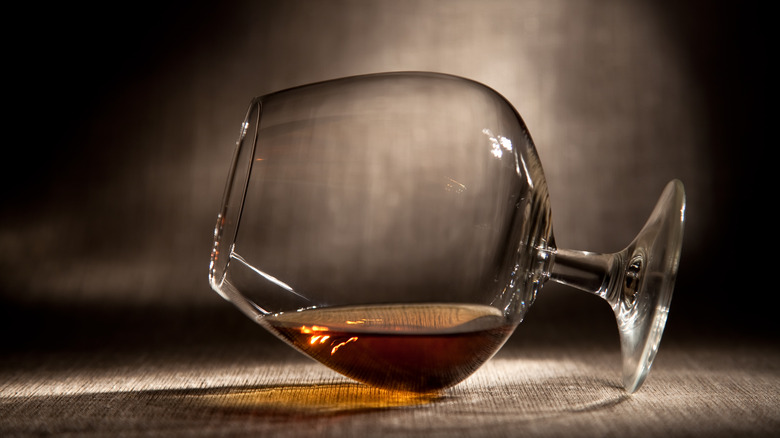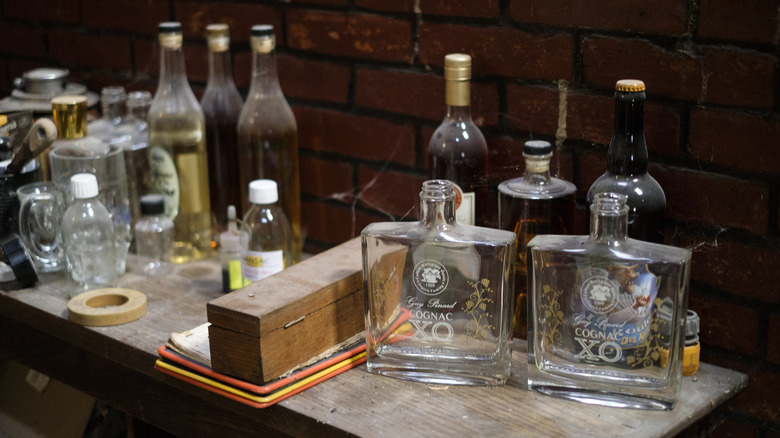What It Means When Your Brandy Bottle Says 'Immature'
Brandy is something of an enigma in the world of alcohol. At times it brings to mind stuffy Victorian judges sipping on the sauce by the fireplace. But it's also the drink of choice for rap and hip-hop culture in the form of Hennessy, with hundreds of songs referencing the drink. With such an amorphous personality, you may be confused as to what makes a brandy a brandy.
Brandy is distilled wine; the name comes from the Dutch word "brandewijn," which translates to "burnt wine," though it can also be made from fruits other than grapes. After the wine is distilled, it's aged in oak barrels for several years. At this point, the distillery is legally allowed to label their product as brandy.
You may have come across a bottle labeled as immature brandy. The difference between brandy and immature brandy has to do with the time spent aging in the oak barrels. If the drink has spent less than two years aging in an oak barrel, it is required to label itself as immature brandy. That can mean the brandy never touched oak or it could mean it spent 103 weeks aging in a barrel before being pulled out and bottled. Distilleries will tell you how long it aged for, as they are required to give an age statement on the bottle if it's immature.
Immature brandies are typically American
Immature brandies aren't all that common, though they aren't excessively difficult to find if you're looking for one. The two most popular styles of brandy are Cognac and Armagnac, both of which are regions of France. Cognac brandy is made in the Cognac region of France and the same goes for Armagnac. France has very specific regulations in its alcohol industry intended to maintain the high-quality status that French alcoholic products enjoy. If a distillery follows the guidelines, their product will receive an Appellation d'Origine Contrôlée (AOC) which helps consumers know that a product is up to par for the region. For example, Cognac must be double distilled to be labeled AOC.
Both regions' AOC designations require the brandy to be aged in French Oak barrels for at least two years, so you won't see very many immature French brandies. American brandy, on the other hand, has fewer guidelines, meaning there isn't an incentive for American brandy distilleries to age their product if they don't want to. Although there may be exceptions, if you're looking at an immature brandy it's very likely to be an American brandy. The situation gets somewhat complicated with Pisco and Grappa. Pisco is a popular Peruvian brandy that is unaged and Grappa is an Italian brandy that is rarely aged longer than 18 months. Neither Pisco nor Grappa are required to be labeled as immature brandy despite technically fitting the designation.

